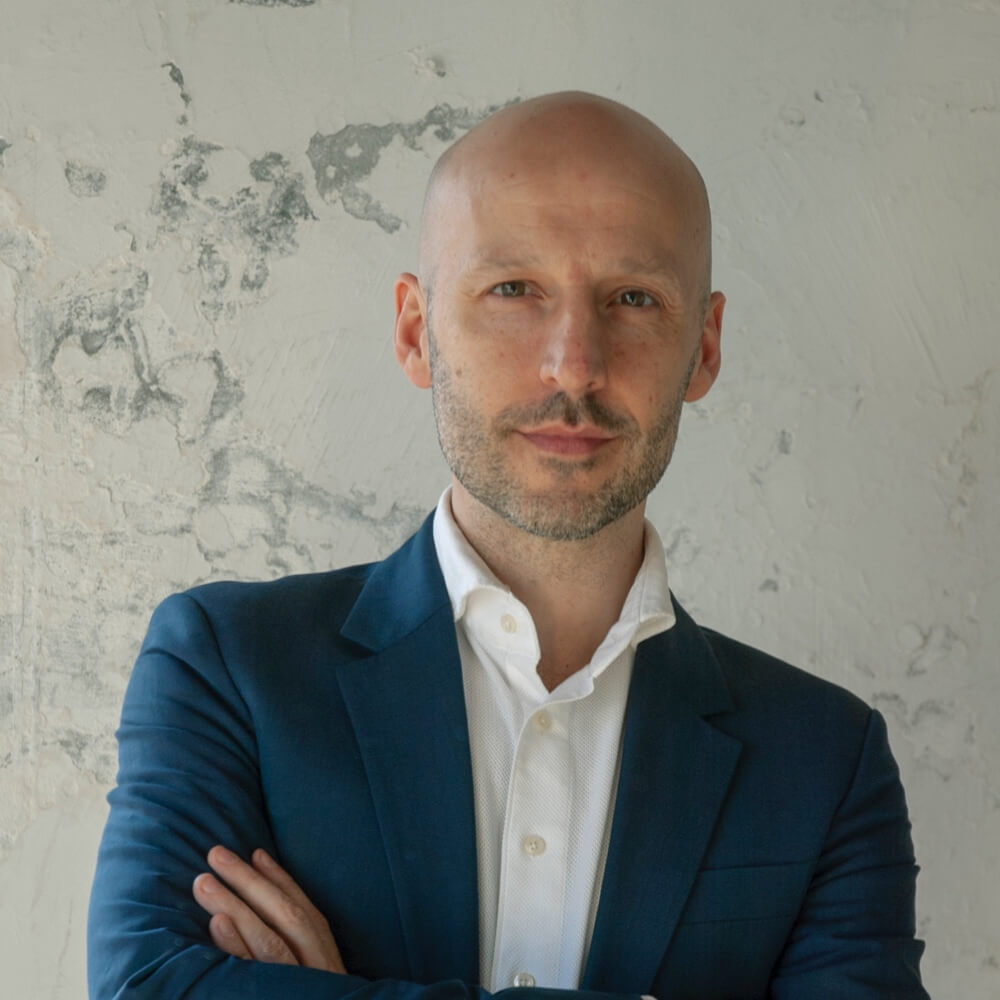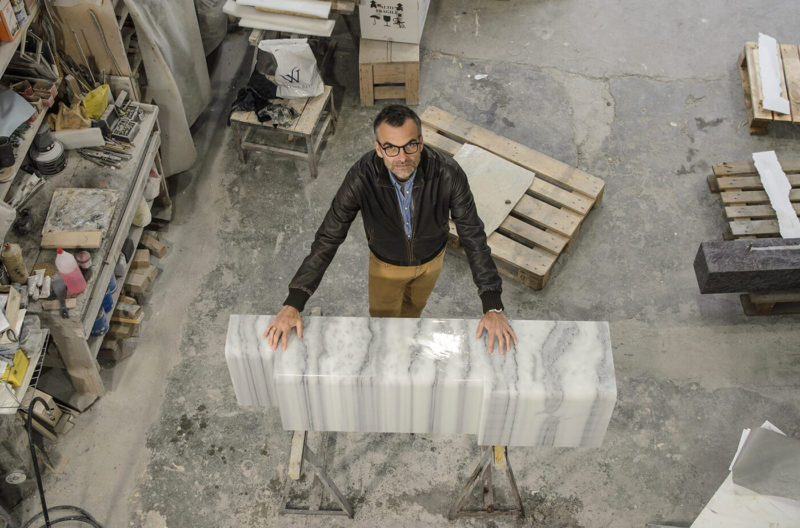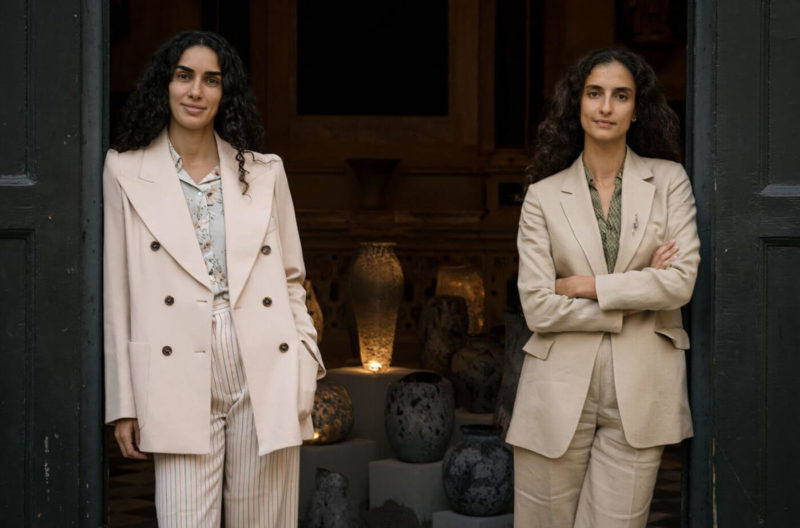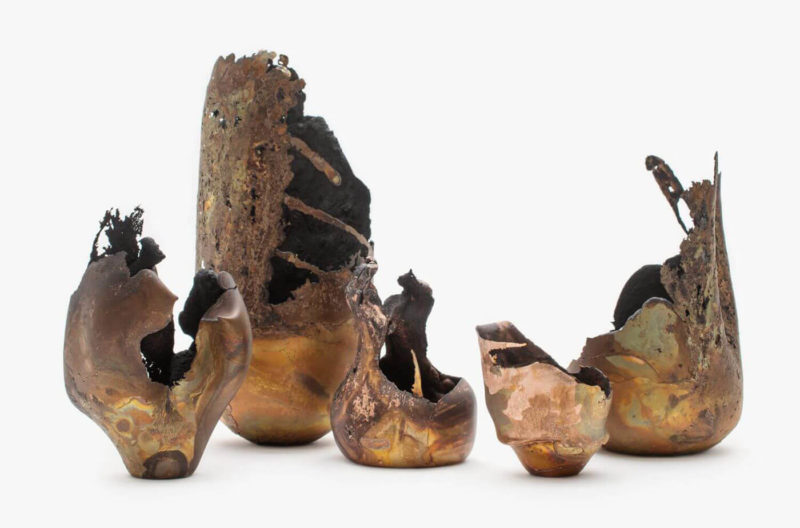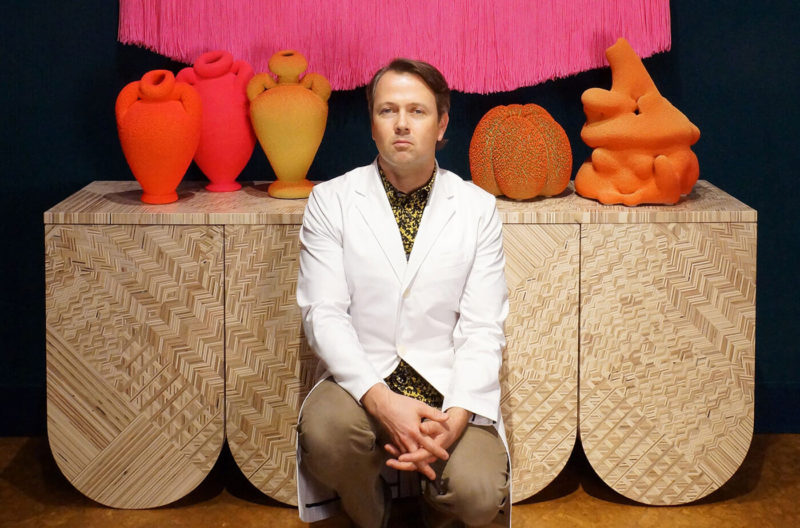Meltdown at the V&A
A spectacle of molten metal and shattering glass … Glenn Adamson is moved by taking part in Omer Arbel’s experimental series ‘113’.
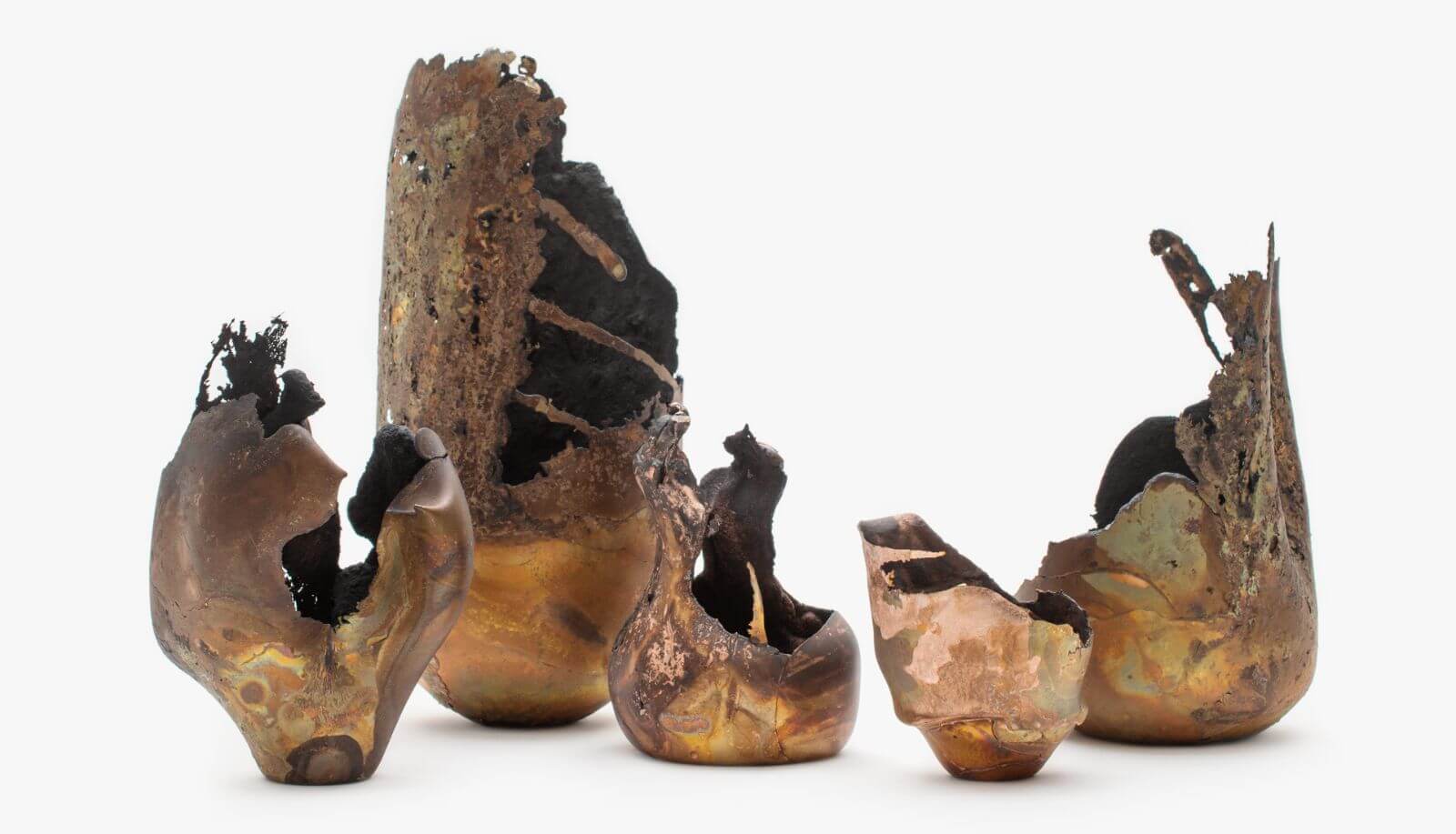
Omer Arbel, ‘113’
COURTESY: Omer Arbel
HAVE YOU EVER held a giraffe in your hands, in its final moments? I hadn’t either, until recently, in the unlikely surroundings of the Victoria and Albert Museum courtyard. I was playing a (very) small part in ‘Material Experiments’, an installation by the Vancouver-based multidisciplinary artist-designer Omer Arbel. I say “unlikely” not because Arbel is a strange fit for the V&A – he has shown his sculptural lighting before, as part of London Design Festival – but because this particular project was so very disruptive to the museum’s business-as-usual.
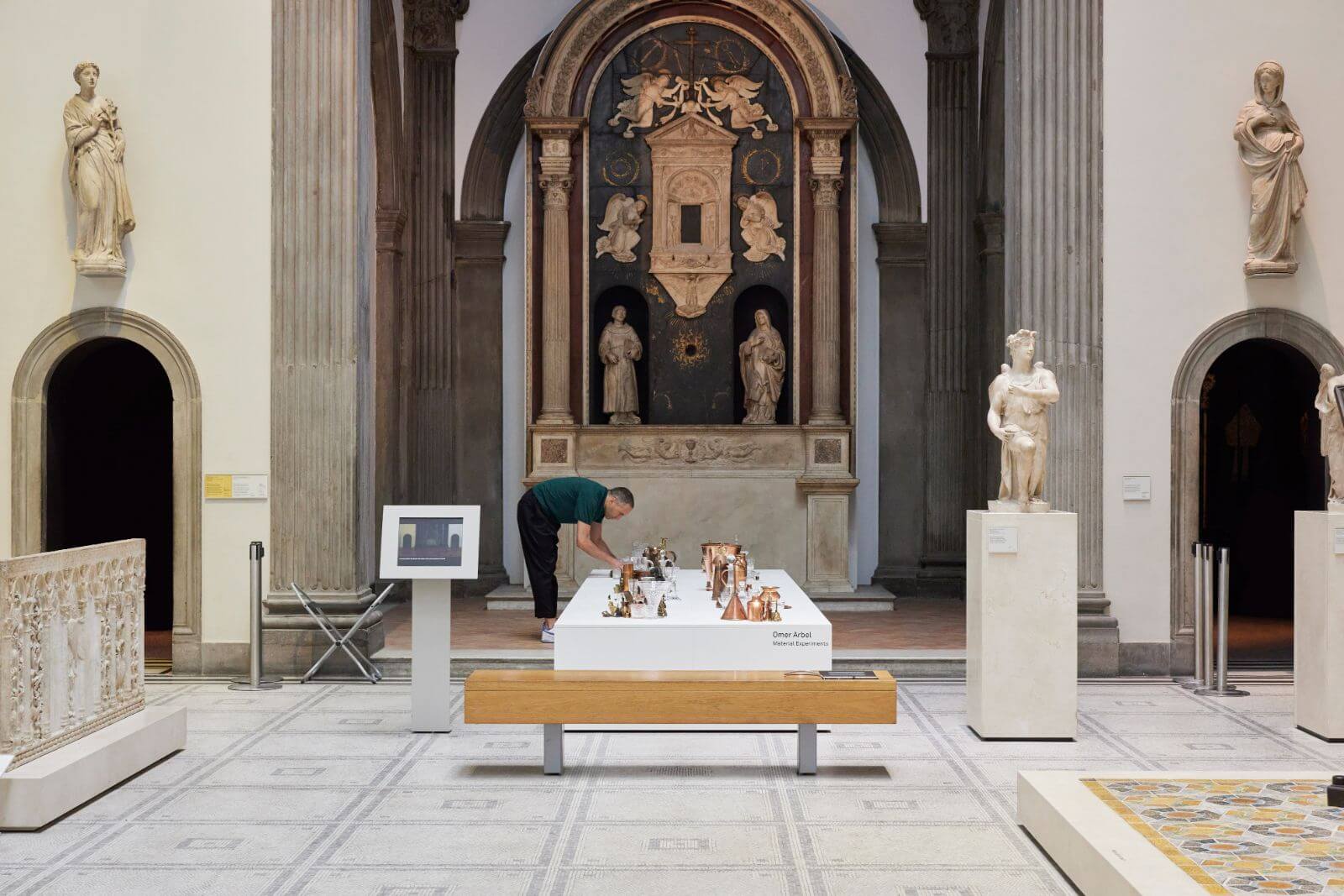
Exhibition view, ‘Material Experiments’ at Victoria & Albert Museum, London Design Festival, September 2022
COURTESY: Omer Arbel, V&A Museum / PHOTOGRAPH: Fahim Kassam
The project was best experienced by beginning in the Santa Chiara Chapel, an architectural masterwork that anchors the V&A’s Renaissance Galleries. It was originally constructed for the order of the Poor Clares, who could be described as a proto-feminist Christian order, and have embraced the virtues of handcraft throughout their history. In this charged setting, Arbel has laid out groupings of historic artefacts, half of which are made of glass, half of various copper alloys. These arrangements are, it transpires, still lives to be destroyed.
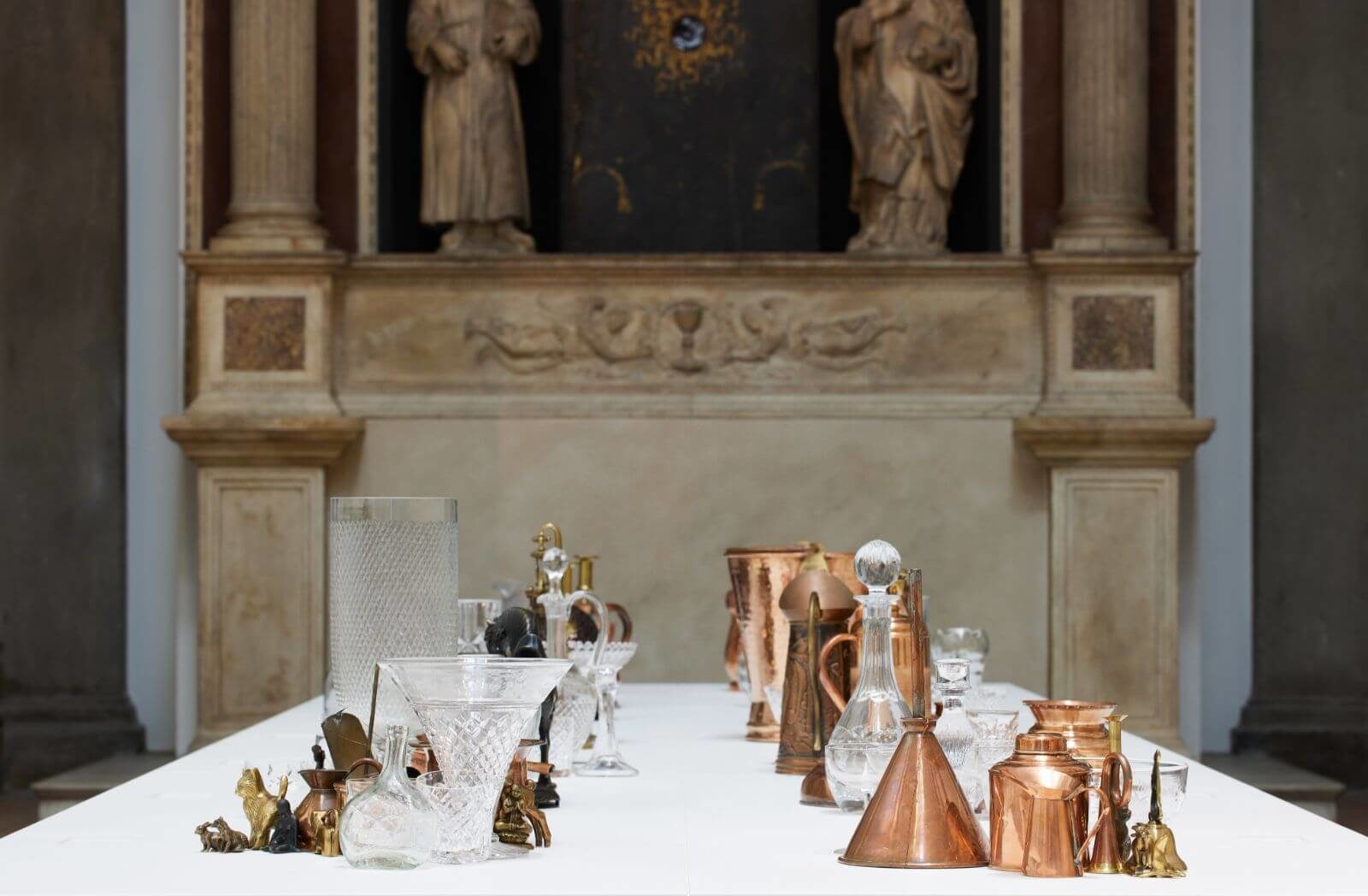
Exhibition view, ‘Material Experiments’ at Victoria & Albert Museum, London Design Festival, September 2022
COURTESY: Omer Arbel, V&A Museum / PHOTOGRAPH: Fahim Kassam
Arbel invited me to choose an object – I went for a sweet little giraffe in cast crystal – and accompany him to the courtyard, where a team of artisans were attending a crucible and a glass furnace. They handed me a pair of safety glasses and a huge heat-resistant mitt. I stepped up, and consigned the giraffe into the blazing-hot glory hole, where it immediately liquefied. Arbel likewise tossed a brass door knocker, shaped like a little girl, into the crucible. A witchy-green flame spurted upwards.
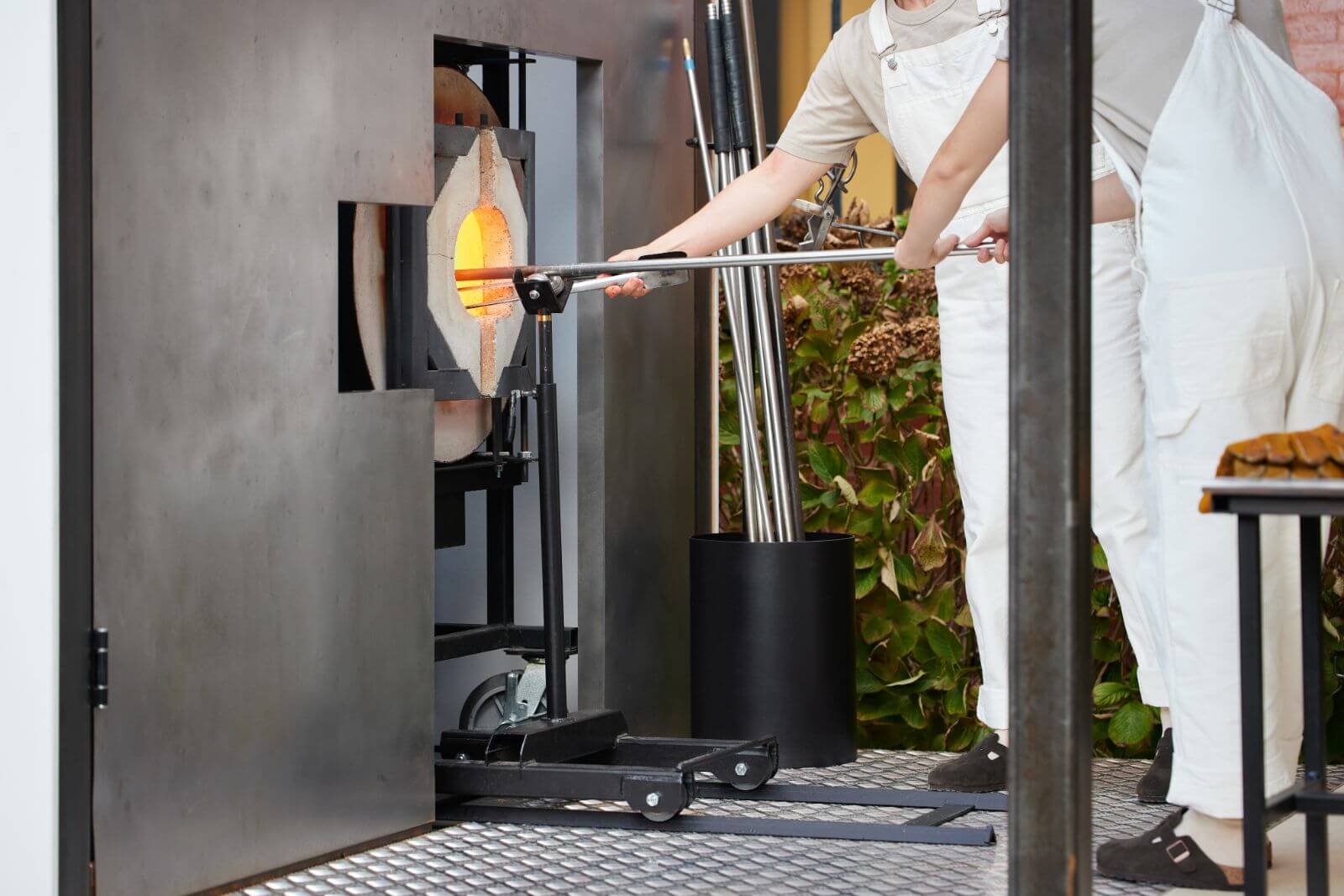
Exhibition view, ‘Material Experiments’ at Victoria & Albert Museum, London Design Festival, September 2022
COURTESY: Omer Arbel, V&A Museum / PHOTOGRAPH: Fahim Kassam
Then came the fun part. As visitors held their phones aloft to capture the moment, the team gathered the glass and blew it into a hollow shape. Into this freshly made container, they poured molten metal from the crucible, creating a red-hot partial skin on the glass’s inner surface. Finally, they laid the composite vessel in a bed of sand, inside a protective cube made of clear sheet glass. It sat there for a few moments – then cracked – and at last, shattered. Physics had taken over: glass and metal have unequal coefficients of expansion, and as they cooled, they inevitably parted company. All that was left was a paper-thin lattice of the copper alloy, a delicate tracery mapping the now-lost glass vessel’s interior contours.
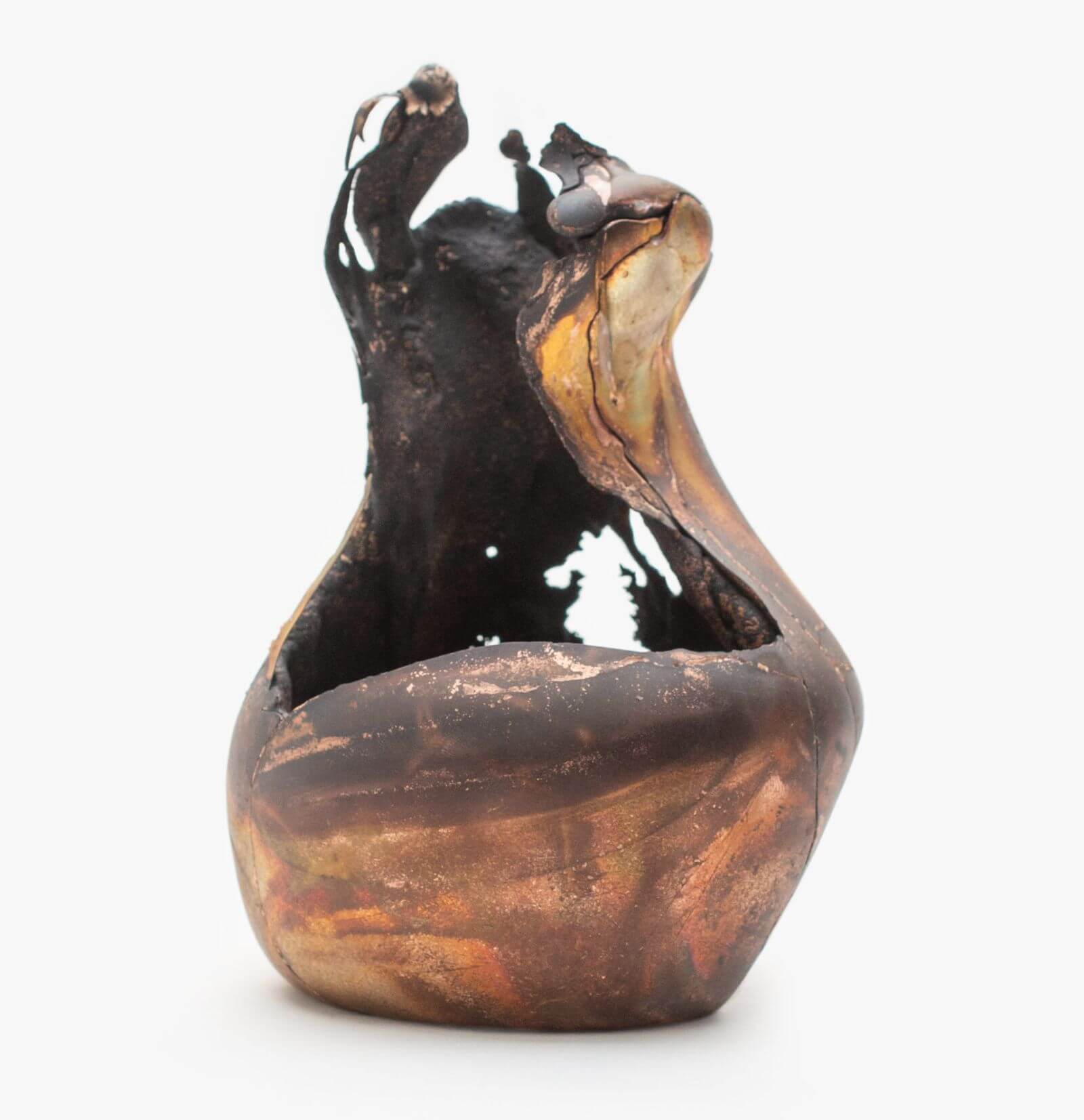
Omer Arbel, ‘113’
COURTESY: Omer Arbel
Two pieces of decorative art were sacrificed in this process – hardly an incidental aspect of the work, given that this was the V&A, the world’s greatest citadel for material culture. In fact, Arbel originally proposed melting down pieces from the museum’s own collection – perhaps things on a list for deaccession? Unsurprisingly, that was a step too far for the institution, but even the destruction of trivial objets d’art, in these hallowed halls, is somewhat sacrilegious. What did Arbel have in mind?
To answer that question, it helps to take a step back, and look more generally at his practice. While his work in glass is internationally admired – alongside his studio practice, Arbel runs a successful production company called Bocci – his interests are defined not by a certain material, but a methodology. He works in parallel with the field of “parametric design,” which typically involves digitally-generated forms, produced on the basis of an algorithm. The results, while unpredictable, are circumscribed by set parameters, hence the name. Arbel employs a similar generative logic, but uses only analogue means. Each of his projects is numbered rather than titled – the one at the V&A is simply called ‘113’ – underlining their quality as experiments.
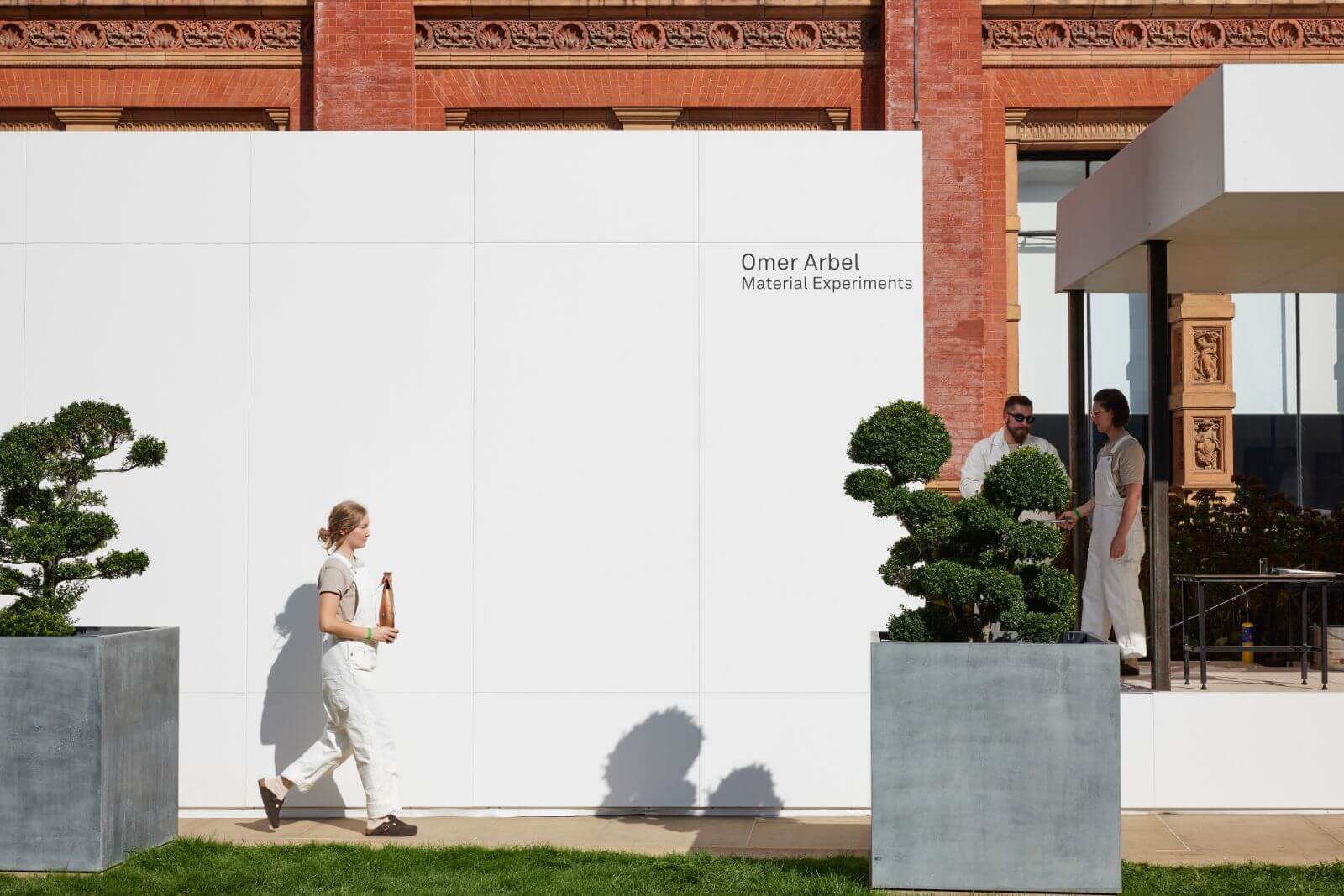
Exhibition view, ‘Material Experiments’ at Victoria & Albert Museum, London Design Festival, September 2022
COURTESY: Omer Arbel, V&A Museum / PHOTOGRAPH: Fahim Kassam
He has cast candles by pouring wax into ice; formed architectural concrete in huge fabric sleeves; created metal jewellery by electroplating a standard bolt thousands of times. In each case, Arbel exerts a carefully calibrated degree of control, while allowing the process to “find” the form. This can even include the choices of his team members. He gives no guidance whatsoever to the glass blowers making the ‘113’s, for example, accepting their aesthetic sensibilities as just another randomising factor.
Arbel’s work is often described as “alchemical”, implying a preoccupation with the mysteries of ancient craft, but that is quite far from his perspective. The pageant of transformation he staged at the V&A was a real departure: up until now, he says, “my work has occurred in the self-referential vacuum of our studio, having very little to do, if at all, with culture around us.”
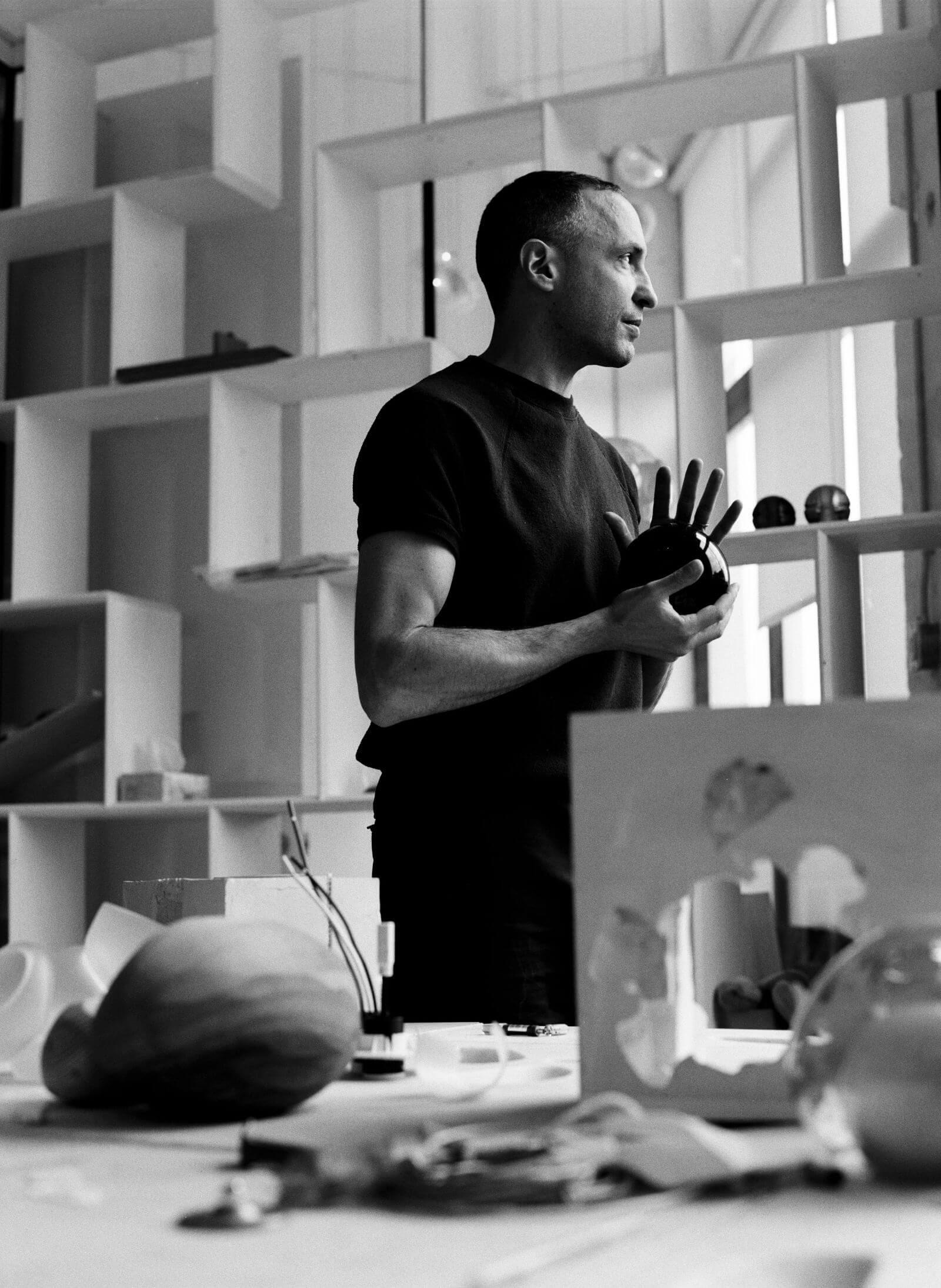
Omer Arbel
COURTESY: Omer Arbel / PHOTOGRAPH: Fahim Kassam
He is very much a future-facing thinker, fascinated by the hyperfluid situation in which we increasingly find ourselves. Perhaps you’ve seen one of the recent Marvel films set in the multiverse, or the independent film Everything Everywhere All At Once, where characters hurtle from one dimension to another, the nature of their reality constantly shifting. These cinematic experiences only exaggerate what is happening in other domains, on our digital screens, in virtual reality, and in our three-dimensional environment. Design is increasingly becoming a domain of “special effects” as our ability to manipulate the environment becomes steadily more complete.
Arbel is fascinated by this kind of shape-shifting. “Take any arrangement of molecules,” he writes in a statement for the V&A project. “Simple or complex, symbolic or meaningless. The same raw material can be configured as a planet, our earth for example, full of life, animals, microbes, plants, thinking humans … Or the very same sum of raw matter can be a lifeless rock floating in space for billions of years.” Yet he does not regard this all-pervasive fungibility as an unmixed good. While the presentation of ‘113’ at the V&A was undeniably spectacular, it also had a pronounced strain of melancholy. I first felt this undercurrent when I tossed my giraffe into the inferno, then thought about it more as I watched the ‘113’ gradually shed its crystalline carapace. An infra-thin space opened up between the glass and the metal, as they pulled away from one another in inexorable detachment. The fragile-looking copper vessel that resulted was beautiful, but also slightly tragic, like the remnant of some terrible disaster. This effect is multiplied when the ‘113’s are presented en masse – as they are at the V&A, right next to the blowing area – a display equally suggestive of blooming plants and industrial slag. Each object is a relic of its own making; a shadow of its former self.
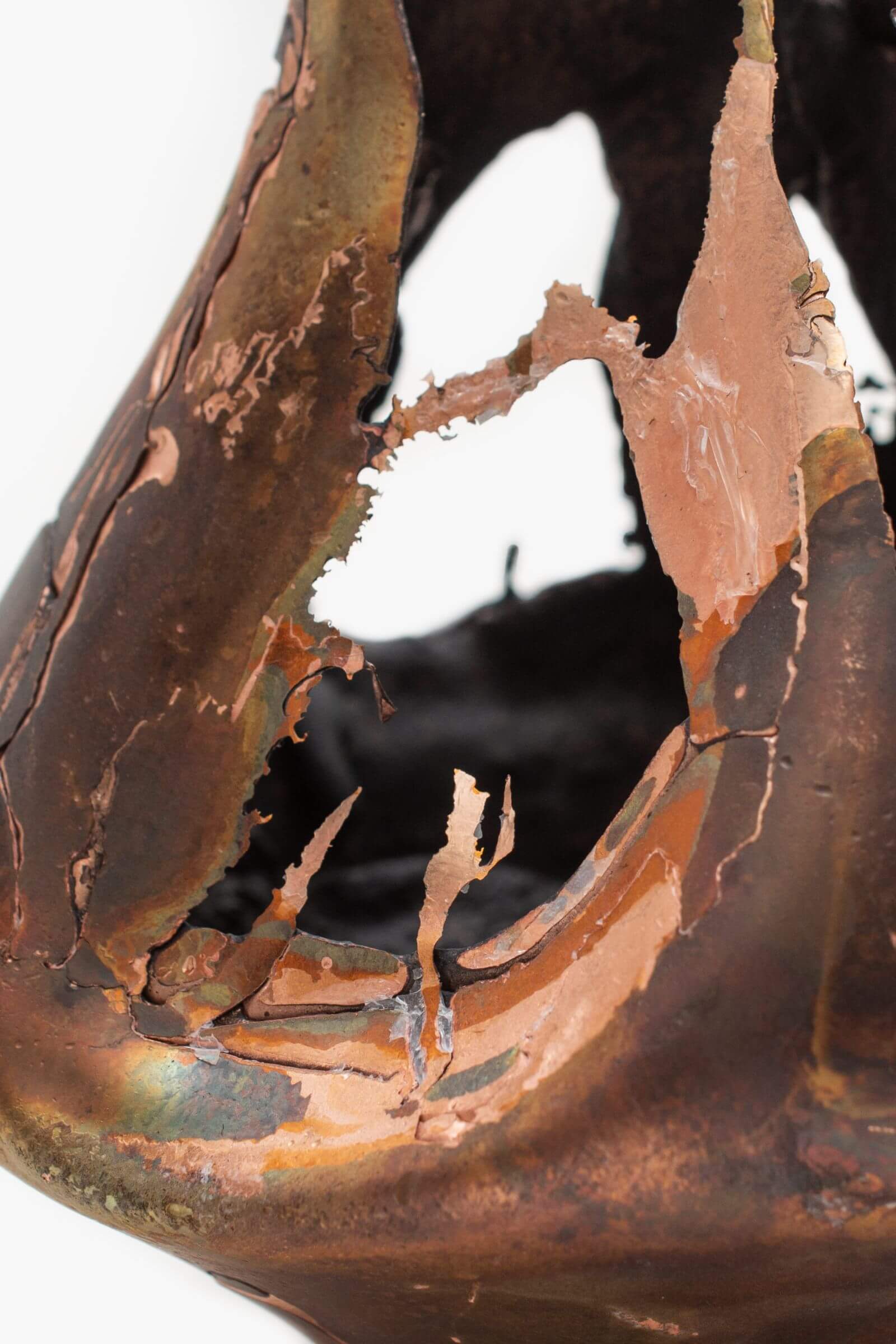
Omer Arbel, ‘113’
COURTESY: Omer Arbel
“Every good thing suggests its opposite,” Arbel said to me, as we stood watching his carefully choreographed theatre of immolation and creation, absence and presence. Looking back on that comment, it strikes me that the V&A itself, in all its monumentality, is quite a fragile thing. Approximately five billion years from now – not all that long, in the grand scheme of things – our sun will become a red giant. It will swallow the earth and everything on it, very much including the carefully accessioned items in our museums (in the highly unlikely event that such institutions still exist, so far into the future).
In one sense, however, nothing at all will be lost. The atoms that make up our little world, all that remains of human creativity, will be burnt, swept up, and dispersed into the cosmos. Some of these particles, doubtless, will eventually come to comprise cold dark rocks, hurtling through the void. But perhaps others will come to reside on some other planet, teeming with life. We won’t much mind. But it’s out there, at such inconceivably remote distances of time and space, that we find Omer Arbel’s true subject: materiality itself, the ultimate parameter.
Material Experiments at V&A, London, 17th– 25th September 2022.
